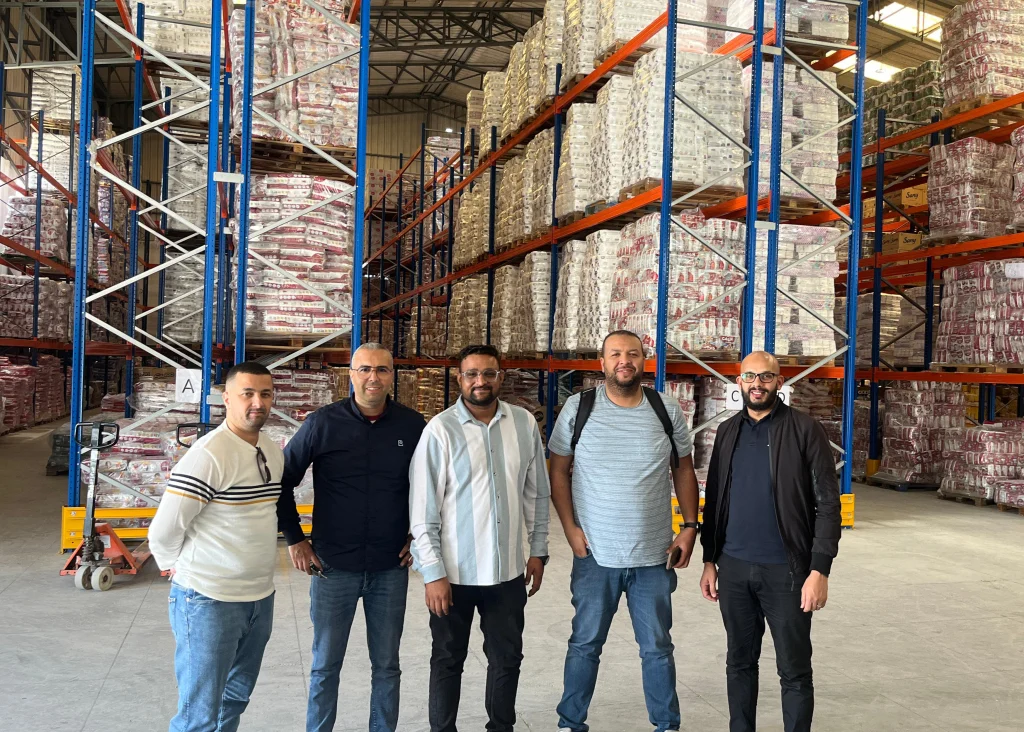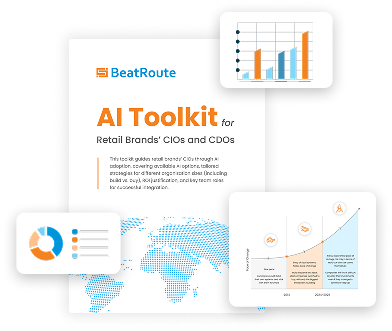Primary Order in Retail Distribution: A Complete Guide

Are you trying to figure out how to manage stock flow more efficiently between your company and distributors? Or figuring out how to make your primary order process more reliable and scalable? Maybe you’re looking to boost primary sales, avoid stockouts, or streamline your distributor relationships like the top retail brands do.
If any of this sounds like what you’re grappling with, you’re in the right place. This blog will walk you through the concept of primary orders in retail distribution, explain how they impact your overall sales operations, and show you how to improve them through smarter planning and better tools.
What is a Primary Order?
In the world of retail distribution, a primary order refers to the initial bulk transaction where companies sell goods directly to distributors, stockists, or C&F agents. This is the starting point of the supply chain and sets the foundation for downstream sales activities. Unlike secondary or tertiary sales, primary orders are B2B transactions that generate the first line of revenue for businesses.
These transactions involve transferring goods from the company to authorized distribution partners who manage regional demand. Distributors typically place large-volume orders that are not directly sold to consumers but instead serve as inventory for future secondary orders.
This initial transaction helps brands trigger the supply chain, align demand with production, and maintain stock visibility across regions.
Primary vs. Secondary Orders: Quick Comparison
Understanding how primary orders differ from secondary orders helps sales, IT, and ops teams set the right benchmarks for planning and performance.
| Order Type | Who Places It? | Who Receives It? | Typical Volume |
| Primary Order | Distributor/Stockist | Manufacturer/Company | Large |
| Secondary Order | Retailer/Sub-distributor | Distributor/Stockist | Small |
- Primary order = Distributor to Manufacturer
- Secondary order = Retailer to Distributor
To explore the full sales hierarchy in retail distribution, check out our blog on Decoding Primary, Secondary and Tertiary Sales
Why Is Primary Sales Important for Retail Brands??
Primary sales are a strong indicator of distributor confidence, regional demand, and sales team effectiveness.
Think of your primary order as a pulse check for demand and supply readiness. This pulse is critical because it gives you a reliable signal for planning, performance tracking, and supply movement. Primary sales is important for retail brands for the following reasons:
- It reflects how confident your distributor is in moving stock into the market
For example, if a distributor places a high-volume primary order right before a festive season, it signals trust in market demand and confidence in selling through that inventory. - It forms the foundation of your revenue
These transactions are the first point of revenue recognition for the brand and help gauge the market appetite for a product range. - It impacts downstream sales performance
If primary orders slow down, it creates a ripple effect across the supply chain. Distributors may run out of stock, causing secondary and tertiary sales to decline. - It helps the manufacturer forecast production and align inventory planning
Suppose multiple distributors across northern India place higher-than-usual primary orders ahead of winter. This allows the brand to ramp up production of relevant SKUs like soups or moisturizers without guesswork. - It acts as a key performance indicator (KPI) for both supply chain and sales teams
For instance, regional sales managers often track primary order volume to gauge distributor engagement and territory-level performance. A drop in orders can quickly flag issues in demand, scheme reach, or distributor motivation.
Common Challenges in Managing Primary Orders
Even high-performing retail brands face avoidable disruptions when primary orders are not streamlined.
Before implementing a solution, it’s important to understand what might be slowing down your primary sales cycle:
- Stockouts or Overstocking: Without accurate demand forecasting, you either end up with excess inventory or retail gaps.
- Delayed Payments and Credit Cycles: Unclear credit terms can delay primary order placement.
- Manual Errors in Order Booking: Paper-based or disjointed ordering processes increase the risk of mistakes.
- Scheme Mismanagement: Distributors may miss out on applicable schemes or place incorrect orders due to lack of visibility.
- Low Order Fill Rates: Orders are sometimes only partially fulfilled due to mismatched demand-supply planning.
How a Primary Order Application Solves These Challenges
A dedicated primary order application helps retail brands move beyond fragmented tools and speeds up primary sales by eliminating friction and providing visibility to both the brand and distributor.
Here’s how a dedicated primary order application helps address key challenges:
- Reduces Stockouts and Overstocking: Smart recommendation engines use inventory levels, liquidation priorities, and past history to suggest what and how much to order.
- Improves Credit and Scheme Accuracy: Credit limits and ongoing schemes are automatically checked and applied, so there are no missed discounts or blocked orders.
- Smart Order Suggestions:
Smart recommendation engines suggest SKUs and quantities by analyzing past orders, MSL/FSL compliance, distributor classification, and liquidation needs. BeatRoute’s Order AI Agent powers this by using actual purchase behavior and compliance benchmarks to ensure primary sales align with product priorities, stock movement, and territory-level demand.
Boosts Order Fill Rates: Clear visibility and better coordination between brand, sales teams, and distributor improves fulfillment planning.
What to Look for in a Primary Order Application
The right primary order software should go beyond order capture to help you scale, monitor, and control execution from HQ to field.
Choosing the right primary order application is key to streamlining order flow and eliminating manual gaps in your primary sales process. Beyond basic order capture, your platform should help enforce your sales strategy, drive consistent execution, and give your team full control over how distributors engage with your brand.
A goal-driven solution like BeatRoute empowers sales teams and distributors to place smart orders, stay scheme-compliant, and improve order fill rates without manual effort.
The software offers:
- Mobile ordering through native Android and iOS apps
- WhatsApp or Viber interfaces for seamless distributor communication
- Web dashboards for distributors and brand managers
- Real-time order status tracking
- Scheme integration and credit limit checks
- Reporting for sales managers and brand teams
Why Choosing the Right Primary Order Software Matters
Primary order software leads to better fill rates, faster decisions, and consistent scheme execution at scale.
Primary orders are more than transactions. They are the starting point of your entire sales engine. When executed well, they help maintain market availability, maximize scheme ROI, and reduce operational chaos.
If your primary order process still relies on spreadsheets, it’s time to rethink your system.
BeatRoute’s goal-driven Distributor Management System works as a powerful primary order application. It enables brands and distributors to digitize order placement, reduce friction in scheme execution, and maintain ideal stock levels across regions. With features like BeatRoute’s Order AI Agent, real-time scheme application, and mobile-first access, it becomes a one-stop solution for efficient primary sales management.
👉 Book a Demo with BeatRoute to simplify your primary order cycle from planning to fulfillment.
FAQs
What is a primary order in retail distribution?
A primary order in retail distribution refers to the initial bulk purchase made by a distributor, super stockist, or C&F agent directly from the manufacturer. It marks the first movement of goods from the company to the distribution network.
Who places primary orders?
Primary orders are typically placed by distributors, super stockists, or C&F agents. These partners aggregate demand in their respective territories and order directly from the manufacturer.
What is the difference between a primary and secondary order?
A primary order is between a distributor and the manufacturer, while a secondary order is between a distributor and a retailer. Primary orders involve large volumes, whereas secondary orders are smaller and more frequent.
How can retail brands improve primary order efficiency?
Retail brands can improve efficiency by using digital tools like primary order software, which streamlines order placement, tracks schemes, and provides real-time visibility. Strategies like better forecasting and AI-based order recommendations also help.
What is a primary order application?
A primary order application is a digital solution or mobile tool that allows distributors to place bulk orders with manufacturers. It often includes features like scheme auto-application, smart suggestions, and live tracking to reduce errors and speed up the process.
Check out our blog on Primary Order Application Must-Have Features to explore more.
About the Author
-
Surya Panicker is the Head of Content at BeatRoute, where she leads content strategy for India’s goal-driven sales platform. With 9 years in marketing automation and SaaS, Surya specializes in building content that translates complex solutions into actionable business outcomes. Her approach combines data-driven insights with a storytelling mindset, always putting the customer at the center of her narratives. Surya focuses on aligning brand messaging with audience needs to deliver practical results. Outside of work, she enjoys exploring new cuisines, reading fiction, and traveling with her family.
Use Goal-Driven AI to Achieve Retail Sales Uplift, Today!
Join enterprises in 20+ countries that trust BeatRoute, the globally dominant AI platform for sales force automation, field sales, DMS, and eB2B
Latest Insights & Articles
Here are the most impactful articles, platform updates, ebooks and reports for you.



